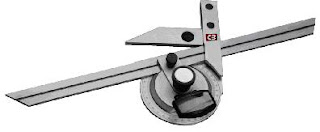- To describe how the thermocouple functions.
- To describe the use o a thermocouple with a Wheatstone bridge circuit for the measurement of temperature.
- To know the different types of thermocouples.
- To calculate the rise time of a thermocouple.
Introduction:
The measurement of temperature in industrial processing is an important concern. Temperature is the most important effect on certain manufacturing processes as well as on the physical manufacturing environment. Without information about the temperature of materials & its environment, manufacturing technology would be crude by today's standards. Temperature transducers are utilized to convert temperature changes into electrical changes. The electrical variations can be displayed on a meter or recorder. The thermal transducers most often employed are the thermocouples, thermistors & RTD.
Apparatus:
- Master builder S300B.
- Insertion panel SIP380-1.
- Digital multimeter.
- Hand made type J (iron-constantan) thermocouple wire & commercial type J thermocouple wire.
- Electric solder.
- Stop watch.
- Connection leads.

Review & discussion:
- What is a thermocouple?
It is a thermal transducer or thermal sensor that converts temperature changes into electrical changes; it is formed by a junction of two dissimilar metals, such as iron & constantan (type-J) or chromel & tophel (type-K). The junction when heated it produces a small voltage & associated current flow, the voltage developed is directly proportional to the junction's temp.
- What determines the amplitude of change at the output of a thermocouple amplifier?
The type of the materials used in making a thermocouple & the supplied temperature.
- Refer to figures 11-9 & 11-10 in the manual. Which thermopile would produce the largest voltage deflection?
The thermopile in fig. 11-10 because the thermocouples are connected in series which causes a larger voltage difference than the connection in fig. 11-9.
- What are thermopiles?
Thermopiles are series & parallel groups of thermocouples that can be used to increase both the voltage & current outputs of a group of thermocouples.
- Explain the term "time constant"
Time constant (τ) is the time needed to reach 63.8% of the final value in a transient response device.
- What metals are used to construct a J-type thermocouple & K-type?
J-type: Iron-Constantan.
K-type: Chromel tophel-Alumel.
- Refer to figure 11-4 in the manual. Name a type of thermocouple which could be used to 4000o F.
According to the figure we can see that a (C-type) thermocouple can be used to 4000o F.
- Which metal is the positive element of a J-type & K-type thermocouple? (Use fig. 11-6 in the manual).
J-type: Iron.
K-type: Chromel.
- What type of thermocouple can be used to 2300o F & would yield a high output voltage?
According to figure 11-4 in the manual the answer is (K-type) thermocouple.



